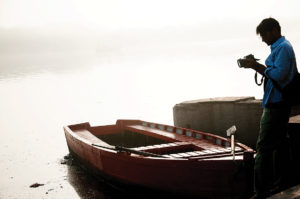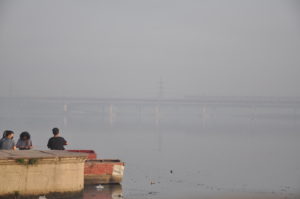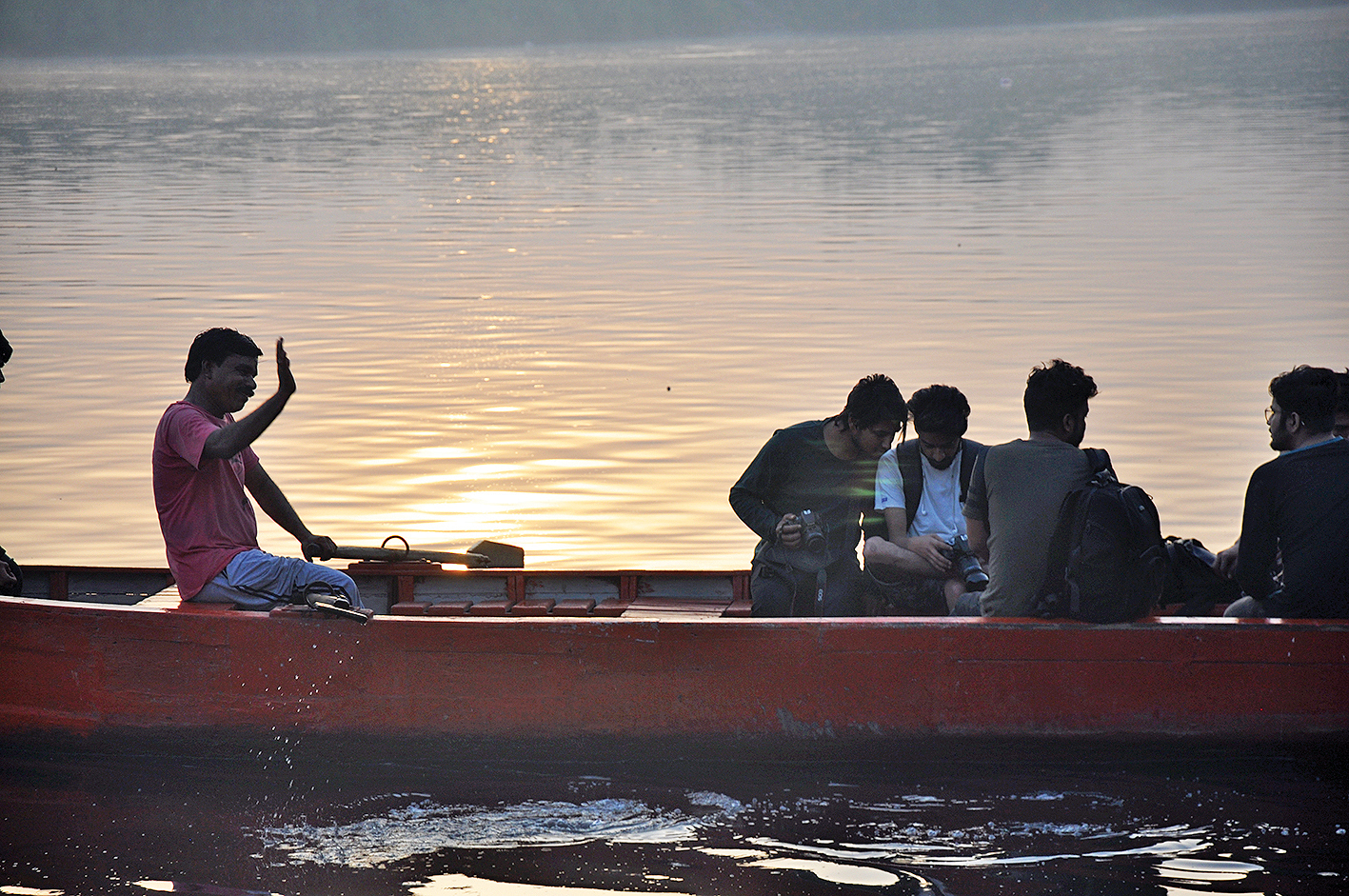A boatman working at the Nigambodh Ghat near Delhi’s Kashmere Gate for 25 years is married to a woman from a rich Muslim family. Religion is no obstacle in their happiness
The river Yamuna holds great significance for the people worshipping it and living around it. Many others worry about the pollution which is eroding its aesthetics. But those for whom it is a source of livelihood or the children who play on its shores, it represents a whole way of life.
Despite Yamuna’s unhealthy surroundings, it is still a marvellous place for tourists. They come there not only to experience it as a picnic spot but also to as a source of inspiration for photography, writing and sketching. It also serves as a meeting point for friends and lovers.
Those who draw sustenance from the river are temple caretakers, ragpickers, priests who conduct cremations and so on. A number of boatmen are ready to give rides to people. Among these self-employed boatmen is Lal Singh (name changed on request) working from Nigambodh Ghat near Kashmere Gate.
Working in the area for almost 25 years, this 43-year-old man has been eking out a living from the Yamuna since the age of 18. He and his fellow boatmen usually charge around Rs 100 for a half-hour ride and Rs 150 for an hour. Helping him around for almost the whole day is his 38-year-old wife Falak Khan (name changed on request). Working day and night to support each other and to keep each other happy is what motivates them to work even harder.
In 18 years of marriage, there have been many ups and downs, their struggle to get married being the biggest one. But according to them, they are living a perfectly content life. “Hum khush hain, kyonki hamari zarooratein kam hain” (We are happy because we have less needs) added the boatman.
For tourists, the experience may end up being an unhappy one, for they tend to fall sick if they make repeated visits. But the poor living conditions do not affect those who live in slums built on the shores of Yamuna. Lal Singh says they have been leading a healthy life. “Ab toh yahan rehne ki aadat ho gayi hain, toh zyada dikkat nahi aati” (We are habituated to the living conditions. It does not affect us anymore), added Lal Singh.
Born in a Hindu family in Jharkhand, this boatman fell in love with his future wife in class 10, after which he had to discontinue studies. He was working in a garage near her school when they fell in love. Their cultural differences were a big barrier for their family. As the man belonged to a zamindar family and the woman belongs to a rich Muslim family which now lives in Canada, their families never accepted their love. But nothing defeated their will to live together.
They ended up running away from their families in order to be together. This is why they left their hometown in Jharkhand and came to Delhi. After almost seven years of working and living together, they had a baby boy who is now 11 years old. And the very next year, they had a baby girl, who is now 10.
Both the children go to a village school nearby, studying in the same class. When the boy was asked about his future, he answered confidently, “Mujhe apne Maa-Papa ko ek achhi zindagi deni hai aur uske liye main khoob mehnat karunga” (I will work hard in order to give a better life to my parents)

After working for so many years, Lal Singh makes about Rs 600-800 a day. During summer, he works from 5-11am and then again 4-7pm. During the heavy tourist season, he earns around Rs 1,000-1,500 per day. During summer, his wife stays at home and works as a housewife to support her husband.
He claims that as few people come around this area during winters, that is when his wife pitches in. On some days she may do domestic work at different places and on some, she may teach in the nearby village school. His wife is rather more educated than him as she is a 2nd year dropout from college.
As the present generation is more demanding in their needs and wants, how does the family cope? When asked about this, his children claimed, “Hamein kabhi aisa nahi laga ki hamare paas kisi cheez ki kami hai” (We never felt the lack of anything in our lives). They are living happily, according to them.
The story of these four is illustrative of how this river holds great importance among the hearts of the people. Apart from its beauty, Yamuna gives spiritual insights and offers a congenial climate for love to survive.
With the conflicts between them and their families, the woman is not in contact with her family anymore. The man, however, talks his mother once or twice a month. They never feel any emptiness in their lives as they have created a small, happy home.
A lot of money down the drain
YAMUNA ACTION PLAN (1993)
The Yamuna Action Plan, to roll out in three phases, was one of the largest Yamuna restoration bilateral projects between the Indian government and Japan. The Japanese government provided India with 17.7 billion yen to carry out this project.

YAP-I (1993)
The main activities under YAP-I focused upon improving methods for the collection and the treatment of waste water covering Delhi and eight towns in Uttar Pradesh and six towns in Haryana.
YAP- II (2004)
It started with an estimated cost of Rs 1,357 crore. Creation of Master Plan (M/P), Feasibility Study (F/S), Detailed Project Report (DPR). Sewerage works (sewers, sewage pumping stations, rising mains, sewage treatment plants) in Northern & Western zones of Agra were also started.
YAP-III (2013)
Yamuna Action Plan for Delhi with an estimated cost of Rs 1,656 crore in hope of cleaning the river. This phase was to end in 2015.





